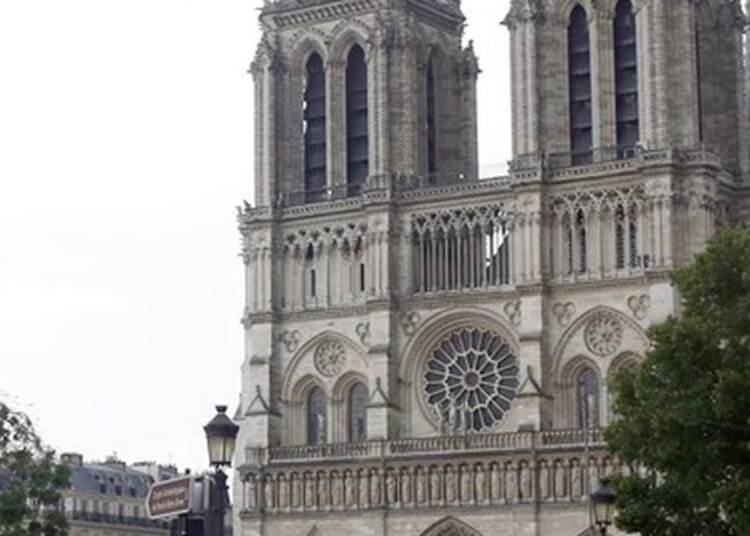It has been almost five years since a fire started at Notre Dame Cathedral in Paris.
#notredame pic.twitter.com/FgU3uAr3PJ
— cristina mendez casacuberta (@ccasacub) April 15, 2019
There were screams from onlookers when the spire fell over and crashed through the burning roof of the cathedral.
La flèche de #NotreDame, en flammes, s’effondre https://t.co/1zqzJ3gzCu pic.twitter.com/Tw7dD8U6Y3
— Paris Match (@ParisMatch) April 15, 2019
Since then hundreds of millions of dollars have been donated to repair the damage and crews have been at work rebuilding the roof using some of the same techniques used by the original builders, i.e. they are doing some of the work with non-powered hand tools and without metal fasteners as a way to honor the original builders.
If time travel was possible, medieval carpenters would surely be amazed to see how woodworking techniques they pioneered in building Notre Dame Cathedral more than 800 years ago are being used again today to rebuild the world-famous monument’s fire-ravaged roof.
Certainly the reverse is true for the modern-day carpenters using medieval-era skills. Working with hand axes to fashion hundreds of tons of oak beams for the framework of Notre Dame’s new roof has, for them, been like rewinding time. It’s given them a new appreciation of their predecessors’ handiwork that pushed the architectural envelope back in the 13th century.
“It’s a little mind-bending sometimes,” says Peter Henrikson, one of the carpenters. He says there are times when he’s whacking mallet on chisel that he finds himself thinking about medieval counterparts who were cutting “basically the same joint 900 years ago.”
The spire which collapsed in 2019 has been completely rebuilt, identical to the one which fell. On top of the original spire was a rooster weathervane. The original rooster was though lost but was later recovered from the ashes. Because it was heavily damaged it will now be displayed in a museum.
In 2021, a photo showed chief architect Philippe Villeneuve cradling the damaged rooster rescued from the debris. The original bird is now safe and permanently on display at the Cité de l’Architecture et du Patrimoine, Place du Tocadéro.
A real milestone happened this week when a new rooster, designed to be a kind of phoenix, was placed upon the completed spire.
On Saturday morning, a crane carefully placed a new golden rooster atop the spire of Paris’ Notre-Dame Cathedral.
While the rooster has long been a national emblem of France and a symbol of Christianity, this particular bird, which sports flame-like wings, is also meant to resemble a phoenix, signifying endurance in the wake of the devastating 2019 fire.
“Since [the fire], we have worked on this rooster, [the] successor, which sees the flame carried to the top of the cathedral as it was before, more than 96 meters from the ground,” said chief architect Philippe Villeneuve, who designed the new weathervane, per Thomas Adamson of the Associated Press. “It is a fire of resurrection.”
Paris is hosting the summer Olympics next year and President Macron had originally hoped to have the cathedral reopened in time for that. The schedule has since slipped a little bit but it is currently scheduled to fully reopen next December 8 in time form Christmas. There are hundreds of people working at the site every day to meet that deadline.
About 500 people are busy at the construction site every day, including architects, engineers, masons, metal workers, carpenters, steeplejacks, and more. Hundreds of others have been involved in workshops around France, using both modern technology and centuries-old techniques — like squaring oak beams with an ax — to re-create parts being transported to Paris…
The work overall has cost about 700 million euros so far, or about $755 million. Donations amounting to nearly €850 million were raised in the aftermath of the fire.
The vaults have been rebuilt or consolidated, except those at the crossing of the cathedral, which will be completed next year once the spire is in place. By next summer, workers are expected to put in new roof coverings, electric cabling and a state-of-the art fire protection system — the old attic had no sprinklers or fire wall.
It’s pretty remarkable that all of this has been done even despite COVID shutting things down in 2020. I’m looking forward to seeing the finished result next year. Here’s a GMA report on the progress.

